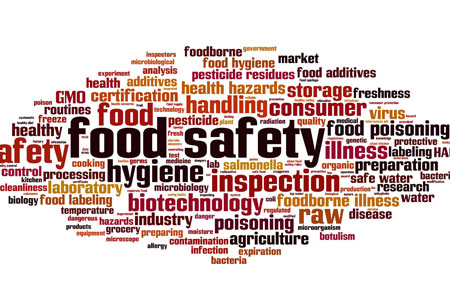THANK YOU FOR SUBSCRIBING
Be first to read the latest tech news, Industry Leader's Insights, and CIO interviews of medium and large enterprises exclusively from Food and Beverage Tech Review
Minimizing Food Safety Concerns with Electropolishing
No doubt, the food and beverages industry is one of the world’s largest industries.

By
Food and Beverages Tech Review | Friday, January 11, 2019
Stay ahead of the industry with exclusive feature stories on the top companies, expert insights and the latest news delivered straight to your inbox. Subscribe today.
No doubt, the food and beverages industry is one of the world’s largest industries. The processing and packaging operations in this industry are primarily concerned with aspects of sanitation and hygiene regulation. One of the influencing factors is the cleanliness of the equipment used in production.
In the food and beverage industry, stainless steel is preferred for a variety of reasons. They are highly durable, easy to clean, and sterilized to prevent food contamination. They are able to withstand corrosive cleaning agents and acidic foods and drinks.
Stainless steel is chosen for its easy-to-clean features and its ability to withstand corrosive antibacterial cleaning agents used to ensure safe food and beverage production. It also resists corrosion, aging, cracking, pitting, and even in the presence of fire does not easily warp or buckle. It is more flexible than many other metals so that it can be formed more easily in smaller, more complex forms.
There are various chemical surface treatments. All these methods have a clean metallic surface and different effects, which are used for various purposes. Electropolishing is the best way to clean stainless steel. Electropolishing works by accelerating the oxidation of an acid electrolyte by using electricity on a metal surface.
The cleaning of the stainless steel with electropolishing helps to passivate it properly. This means that the surface is covered with a layer of iron-free chromium oxide. If the surface is not passivated properly, the stainless steel may not be so stainless.
Electropolishing offers a smooth, easy cleaning, and cosmetically pleasing surfaces that the industry requires, together with non-contamination and sanitation qualities. The process reduces oxidation and contamination of components of stainless steel used in kitchen, dairy, and automatic food processing equipment.
Electropolishing stainless steel parts create a durable finish even if these parts are regularly exposed to moisture and cleaning supplies, making regular cleaning more efficient. The process creates a surface that resists adhesion to the product and eliminates the micro imperfections of bacteria such as Salmonella.
Due to these advantages, electropolishing is safe for the food and beverage industries and is increasingly the industry’s preferred finishing method, enhancing longevity, safety, and ease of use for its various parts.
I agree We use cookies on this website to enhance your user experience. By clicking any link on this page you are giving your consent for us to set cookies. More info







